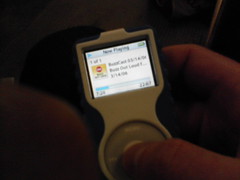
Once you’ve gotten some familiarity with podcasting as a consumer (see Social Media 106/Podcasting 101: Introduction to Podcasting), you may want to explore producing a podcast of your own.
The great news is that for a couple hundred dollars you can get equipment and hosting services that will enable you to produce and distribute a high-quality podcast for your business or academic, non-profit or not-for-profit organization. You can do something that will reflect well on your organization and that will enable you to communicate with and engage your key stakeholders, employees, customers or prospects.
The even better news is that through Social Media University, Global you can get experience as a podcaster in a safe environment and learn how to do it without putting your organization’s reputation at risk. You can see just how easy it is to produce a podcast, so that you will know the steps involved. Then you can go back to your work colleagues and supervisors and/or your IT department and be well-armed for the discussion when they tell you it would be too technically difficult or expensive to produce a podcast.
I’m not going to cover the strategic considerations behind podcasting yet; I will get into those in the 300-level courses. For now let’s just say that you have an audience to reach or a public to engage, and you want to know:
- What steps are required to produce and distribute a podcast?
- Is it realistic for me or for my organization to have a podcast?
The answer to question #2 is definitely yes, and I will prove it to you by answering question #1 with the rest of the 100-level courses in the Podcasting curriculum.
The best news of all is that, in keeping with SMUG’s tuition-free policies, your cost for production and worldwide distribution of your podcast will be exactly:
$0.00
That’s right. Assuming you have access to a computer (and the fact that you’re reading this suggests you probably have that part covered), as a SMUG student you will create a podcast for literally zero dollars. Not “three easy payments of $19.95.” Not “nothing down and no interest for 90 days.” Nothing. Ever.
And you’ll have a built-in focus group. Your fellow SMUG students will be able to subscribe to your podcast and comment on it, offering suggestions for improvement. And you can do likewise for theirs.
I’m going to use this course as an excuse to start my SMUG podcast, too. I’ll experiment with some different methods, and let you know how they work. You’ll be able to hear the results of each production choice. And as I create the distribution system for my podcast, as a SMUG student you’ll be able to add your podcast as a channel for free. I’ll walk you through step-by-step how I did it, and then you can take what you’ve learned back to your business or organization and maybe spend a little more for a dressed-up version.
Get ready for a hands-on learning adventure in podcasting!
If you haven’t enrolled in SMUG yet, you can do that here.
Photo credit: Frank Gruber


